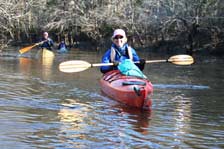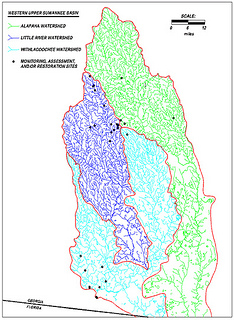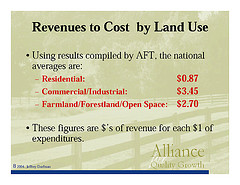 Big Little River Paddle Race
Big Little River Paddle Racepostponed
on account of weather for one week until Saturday 29 30 March 2013.
Sorry about that; please come next week!
-jsq
 Big Little River Paddle Race
Big Little River Paddle Racepostponed
on account of weather for one week until Saturday 29 30 March 2013.
Sorry about that; please come next week!
-jsq
 Lowndes County Emergency Management Director Ashley Tye
reported to the Lowndes County Commission at their
Work Session yesterday morning
that
after the floods of 2009, Lowndes County negotiated with USGS to put a
stream level monitor on the
Lowndes County Emergency Management Director Ashley Tye
reported to the Lowndes County Commission at their
Work Session yesterday morning
that
after the floods of 2009, Lowndes County negotiated with USGS to put a
stream level monitor on the Withlacoochee Little River at the GA 122 bridge,
and the county typically renews that funding once a year.
We shall see whether they approve that this evening.
Here's the video:
Lowndes County continuing funding for USGS HWY 122 Stream Gauge —Ashley Tye
Work Session, Lowndes County Commission (LCC),
Video by Gretchen Quarterman for Lowndes Area Knowledge Exchange (LAKE), Valdosta, Lowndes County, Georgia, 10 September 2012.
-jsq
Want jobs, low taxes, and less flooding? Help maintain our watersheds with good local planning.
What’s a watershed? Kaid Benfield wrote for Atlantic Cities today, The Cost of Sprawl on Clean Water:
Watersheds are topographic areas where all the rain that falls eventually ends up in a namesake steam, river, lake, or estuary.
 These are our local watersheds. Purple is the Little River Watershed, blue is the Withlacoochee Watershed, and Valdosta is where the Little River flows south into the Withlacoochee. Green is the Alapaha watershed, and Tifton is where all three meet. Every drop of rain or used well water or wastewater overflow or pesticide runoff or soapy shower water or clearcut mud that runs downhill into one of these rivers is in their (and our) watersheds.
These are our local watersheds. Purple is the Little River Watershed, blue is the Withlacoochee Watershed, and Valdosta is where the Little River flows south into the Withlacoochee. Green is the Alapaha watershed, and Tifton is where all three meet. Every drop of rain or used well water or wastewater overflow or pesticide runoff or soapy shower water or clearcut mud that runs downhill into one of these rivers is in their (and our) watersheds.
Becoming greener doesn’t just mean a municipality’s adding a pleasant new park here and there, or planting more trees, although both components may be useful parts of a larger effort. How a town is designed and developed is related to how well it functions, how well it functions is related to how sustainable it really is, and how sustainable it is, is directly related to how it affects its local waters and those who use those same waters downstream.
Compact, mixed-use, well-designed in-town growth can take some of the pressure off of its opposite on the outskirts — or beyond the outskirts — of towns and cities. We know that sprawling growth is generally pretty bad for maintaining environmental quality in a region (air pollution from cars that become necessary in such circumstances, displacement of open land, water pollution from new roads and shopping centers that are begot by such growth patterns).
 We also know, as UGA Prof. Dorfman told us several years ago,
We also know, as UGA Prof. Dorfman told us several years ago,
Local governments must ensure balanced growth, as
sprawling residential growth is a certain ticket to fiscal ruin*
* Or at least big tax increases.
Kaid Benfield explains how town planning is related to watersheds:
Continue reading Build retaining ponds upriver to capture flood waters and use them for irrigation?
That would be a start on some of the
many water concerns.
Tim Carroll sent the appended to a long list of people Sunday.
-jsq
Build retaining ponds upriver to capture flood waters and use them for irrigation?
That would be a start on some of the
many water concerns.
Tim Carroll sent the appended to a long list of people Sunday.
-jsq
All,Important news concerning storm water/flood water management in our area. As noted below in Larry’s email, much work has been done to find solutions. I made this presentation to both the local and state Chamber Governmental Affairs Council’s soliciting their support. There have also been numerous contacts with state and federal representatives concerning this issue.
As always, please let me know if you have any questions or comments.
Happy Independence Day,
Tim Carroll
From: Larry HansonContinue reading
Sent: Wednesday, June 29, 2011 4:10 PM
To: Tim Carroll
Subject: FW: Suwannee-Satilla Regional Water Plan CommentsMayor and Council;
Any and all Georgians have the opportunity to comment on the proposed state water plan and specifically the Suwannee-Satilla Regional Water Plan that covers our region. As you know, I made a presentation to the regional water council late last year in Douglas regarding regional stormwater and the need to address this issue as part of the state water plan. The presentation was